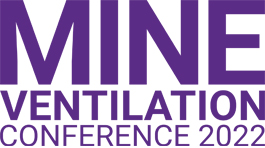Coal Mine Ventilation: Examining the Past, Looking to the Future
Abstract
History attests to the catastrophic consequences that fire, explosion and contaminated, noxious and irrespirable atmospheres can have for workplace health and safety in underground coal mining. It also confirms that fires and explosions present the greatest risk of partial or total loss of underground mines and equipment and that this risk continues to materialise. The design, implementation, operation and maintenance of the mine ventilation system are core controls for managing the hazards associated with these risks, both for preventing them from materialising and for mitigating their consequences if they do materialise. These are most effective when embedded in a risk management approach.
This paper provides a brief summary of the origins and basics of a risk management approach to mine ventilation and reviews select case studies of coal mining mishaps over the last 200 years that have some association with mine ventilation. It identifies insights, learnings and initiatives from these relevant to the effective management of mine ventilation risk. Learnings relate to:
- The need for ventilation management to be integrated into mine planning over the full life cycle of the operation.
- The difficulties in identifying the ignition source for an explosion in an underground coal mine.
- The importance of contingency planning to manage consequences.
- The basis for accepting risk.
An important initiative in the late 1990s in Australia was the establishment of the statutory position of ventilation officer. Ventilation officers have vital contributions to make in the design of mine ventilation systems and the development and execution of risk-based management plans for these systems. This paper notes the need for ventilation officers to be closely engaged and consulted in day-to-day operational decisions that may impact on mine ventilation and the importance of undertaking continuing professional development to maintain the currency of their competencies. The paper looks back as a guide to going forward.
Introduction
History attests to fire, explosion and contaminated, noxious and irrespirable atmospheres being very high risks to workplace health and safety in underground coal mining. All three core contributors to determining the magnitude of these risks, namely likelihood, exposure and consequence, are elevated in the confined space of an underground coal mine, giving rise to the potential for the total loss of a mine and all persons within it when control is lost.
Up until about 1980, a prescriptive legislative approach was generally adopted in an endeavour to prevent these risks from materialising and to control them should they still materialise. The legislation required the appointment of a mine manager, being a statutory official who was accountable for all aspects of the mine. It evolved over time in a reactive manner in response to adverse incidents, with each revision stipulating additional actions that a mine manager was required to take in an endeavour to eliminate the identified causes of these incidents. Subsequently, many jurisdictions including Britain, Australia and New Zealand, moved to a proactive risk-based legislative approach to managing risk in the workplace. The review presented in this paper of select case studies of mining mishaps associated with mine ventilation over the last 200 years reinforces the aptness a risk management approach to mine ventilation. The statutory ventilation officer has a vital role to play in bringing knowledge and competency to risk assessment and management processes, in implementing the outcomes of these processes, and in monitoring and improving their effectiveness.
To learn more, register to attend the Australian Mine Ventilation Conference 2022.
